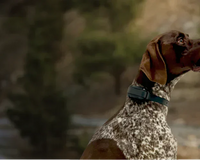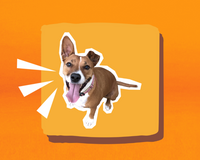Successful Dog Training Words & Tones
The way we interact with our dogs during training is crucial. Dogs read our tone of voice, body language, and choice of words carefully to understand what we are trying to communicate. Here are some points to consider during your training sessions.
1. Dogs pick up on emotions!
They know when we are talking happily, nervously, or angrily. We want training with our dog to stay positive; the way to accomplish this is to stick to two tones: Happy and Stern.
Happy being a high-pitched and excitable tone (similar to how adults speak to babies or young children) and stern being a monotone, calm, and direct tone. Sticking to these two tones will allow your dog to learn the association between ‘good’ and ‘bad’ behaviour and understand when it is time to listen or time to play.
2. Keep your training words as simple and short as possible!
Dogs can get confused if you use too many words for one command, e.g., ‘Sit’ vs ‘Sit Down’.
We suggest using one word for all commands as we can subconsciously mix them together which causes confusion, e.g., ‘Sit Down’ vs. ‘Down’ for if our dog is jumping, dropping a ball, etc.
Sit - Stay - Drop - Lay - Roll - Wait - Hungry - Up - Down - Keep it simple.
3. Get Low!
Dogs love when we bend down to their level. If you are struggling to get your dog to return to you when off-lead or simply head in your direction at home, make sure you are watching and squat down to the ground. Ensure you say the training word you have selected ‘come’ or ‘here’ in an excitable way and put your arms out. Your pup should be so excited that you want to interact that they will want to please.
Getting lower to the ground also enables your communication platform (face, mouth, eyes, etc) to be closer to their level, increasing your trusting relationship.
4. Stay consistent
If you stay consistent with the words, tones, and body language you use whilst training your dog, they will quickly catch on to what you are asking of them. Practice makes perfect, they say, so give your dog every chance to succeed by being repetitive and committed to your original training decisions. Don’t give up on them either; we should never underestimate the intelligence of our dogs!
5. Toilet Training
Toilet training never stops, and positive reinforcement is crucial when encouraging your dog to develop good toilet behaviour. Making going to the toilet a happy experience every time is essential; dogs can develop ‘confidence’ issues if we scold them during this learning process.
Reward them with positive language when they are going to the toilet in the correct area. Use the happiest voice you can find within yourself and congratulate them. A confident toilet-goer makes life easier for everyone.
Stay tuned for more weekly tips and tricks!











